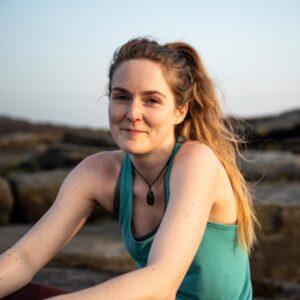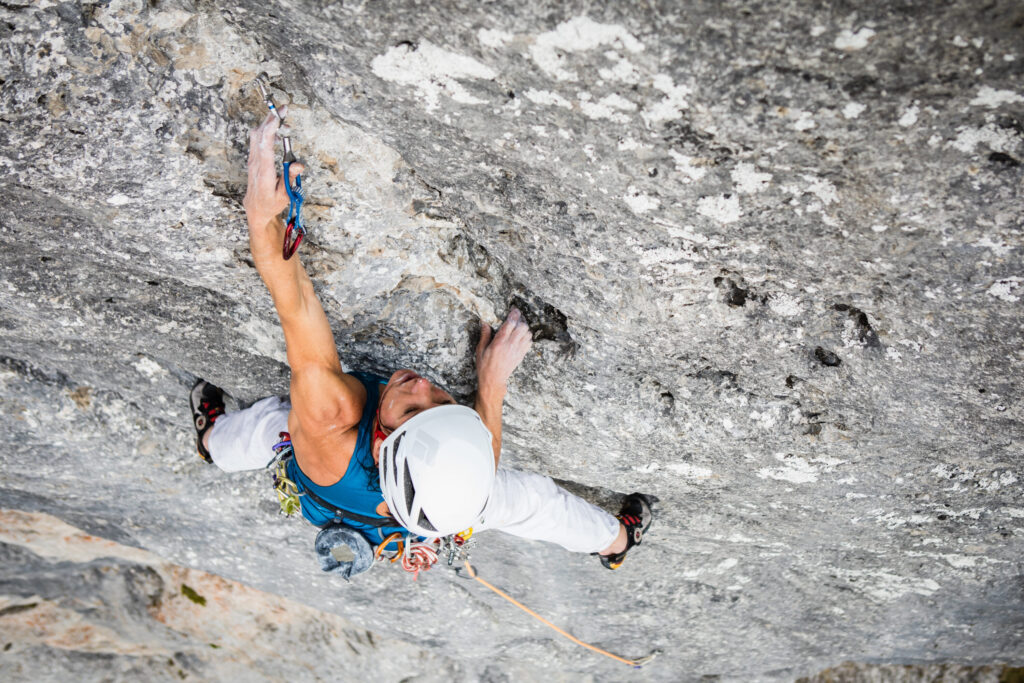Ice and mixed climbing are having a moment right now. Participation in these activities and the media’s appetite for arguably the gnarliest forms of climbing is at an all-time high. Arguably one of the most preeminent alpinists of our time, champion ice climber Ines Papert knows a few things about climbing the cold stuff.
Born in Germany, Ines discovered her love for the mountains after moving to Bavaria at 19. Three years later, Ines climbed Watzmann, her first significant peak and the third highest mountain in Germany. Ten years after that, she won the Ice Climbing World Cup, and has won it three more times since then. With a first ascent of Likhu Chuli (6719m) in Nepal to her name, becoming the first woman to climb the mixed climbing grade M13, and both repeating and opening some of the most difficult routes in the world, including the first female ascent of The Hurting XI 11, one of Scotland’s most testing winter climbs.
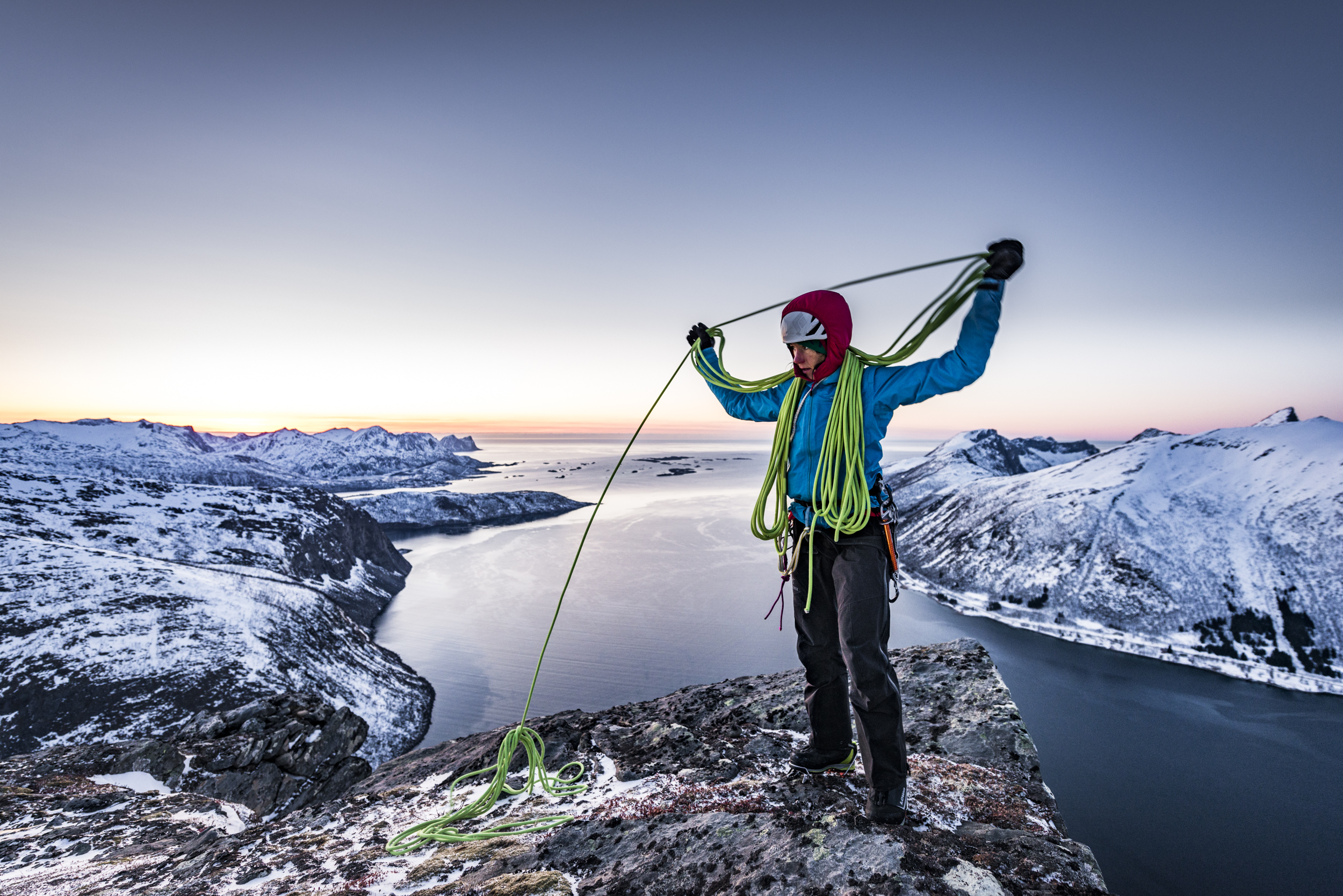
© Ines Papert
Put simply, ice climbing is the act of ascending frozen water formations and features, but when you get into the specifics, it’s far more complicated and nuanced. Think tackling terrain including frozen-over rock faces, icefalls and free-hanging, vertical ice stalactites using axes and front-point crampons. There are weather systems to consider, avalanche risk, crevasses, freeze and thaw cycles and of course, the fact that natural ice is becoming scarcer and indeed more fragile as the world grows warmer.
Then there’s the equipment needed for ice climbing; ice screws are placed to protect the climber from a fall, but more typical climbing gear such as hexes and wires might also be required for mixed routes that cover rock and frozen turf too. Ice and mixed climbing have separate grade systems to get your head around, oh, and then there’s dry-tooling.
So, how has ice climbing changed since Ines’ career first began on the newly-formed competition circuit, 20 years ago? I caught up with this rock, ice and mixed climbing master on a rare rest day, whilst she and climbing partner Sarah Hueniken lay in wait for a weather window to progress on their latest project, opening up a new line at Helmcken Falls, Canada.
First of all, since the beginning of your climbing career, has climbing changed and how?
Yes of course, a lot. I’m really, really grateful that I was part of the earlier generations in a fresh, new kind of mixed climbing that we experienced back in the day. With the new shape of the tools, and when ice climbing became more than just a training sport for alpine missions and people started creating goals on steep ice and mixed lines around the late 1990s or early 2000s. We still had so much to explore, we still had lots of new routes to claim, which gets less and less since there’s more and more people doing it, which is great. But it felt like everything was kind-of fresh and new then.
And nowadays there is that kind-of social media mentality, it’s easy for young people to get the feeling that they are in the wrong place at the wrong time. The fear of missing out is something I can see in my son’s generation a lot. I encourage younger people sometimes to just switch off from social media for some time and to focus on what they’re doing. On one hand, you can crazy good information on social media, but you also can easily get lost. I get the feeling: Oh, what am I doing here? I am at the wrong place. It’s too warm here. I should be somewhere else right now because the conditions are good. And having patience, waiting for right conditions is a part of climbing.
I guess partly thanks to its presence on social media, climbing in all its disciplines is more popular than ever these days. How do you feel about that?
I’m really happy that climbing became so popular in the past 20 years and that people love to explore the mountains, not just gyms. Inspiring people is a big part of my career and what I’m doing, I really like to inspire people and I enjoy seeing more and more people out there, even though I’m more the person that would prefer to go to places where it’s less crowded! There’s so much space in our environment that there’s enough for everyone.
It’s not unusual to hear stories of people who don’t understand the ethics of climbing maybe doing the wrong thing or not respecting the rules of that area. How do we go about protecting those spaces when it comes to lots of new people coming into the sport?
I think the more we encourage people to not just go climbing but also to respect the ethics of certain areas, the better. I think that’s part of the culture that keeps climbing so exciting for the next generation, if we really stick to the rules.
And being honest about what we are doing and the questions we need to ask first. I’m not saying I’m always climbing on trad gear, I put bolts and I did many new routes on the planet, but I always respected that part of the world. What is that mountain? Or that mountain range? What has this been in the past? What have other people done in that range?
For example, in Norway or in Scotland, of course I wouldn’t place a bolt because I respect the local ethics. But also, I’m open-minded. Coming here to Canada for example, we have been bolting a new line up that Helmcken cave, because people have been bolting routes there before and that is the only way to climb it.
I really think the more we make new climbers that come into the sport aware of those ethics and those rules, the longer the next generations will also find their adventure – you might just have to go further away from the road.
the more we make new climbers that come into the sport aware of those ethics and those rules, the longer the next generations will also find their adventure
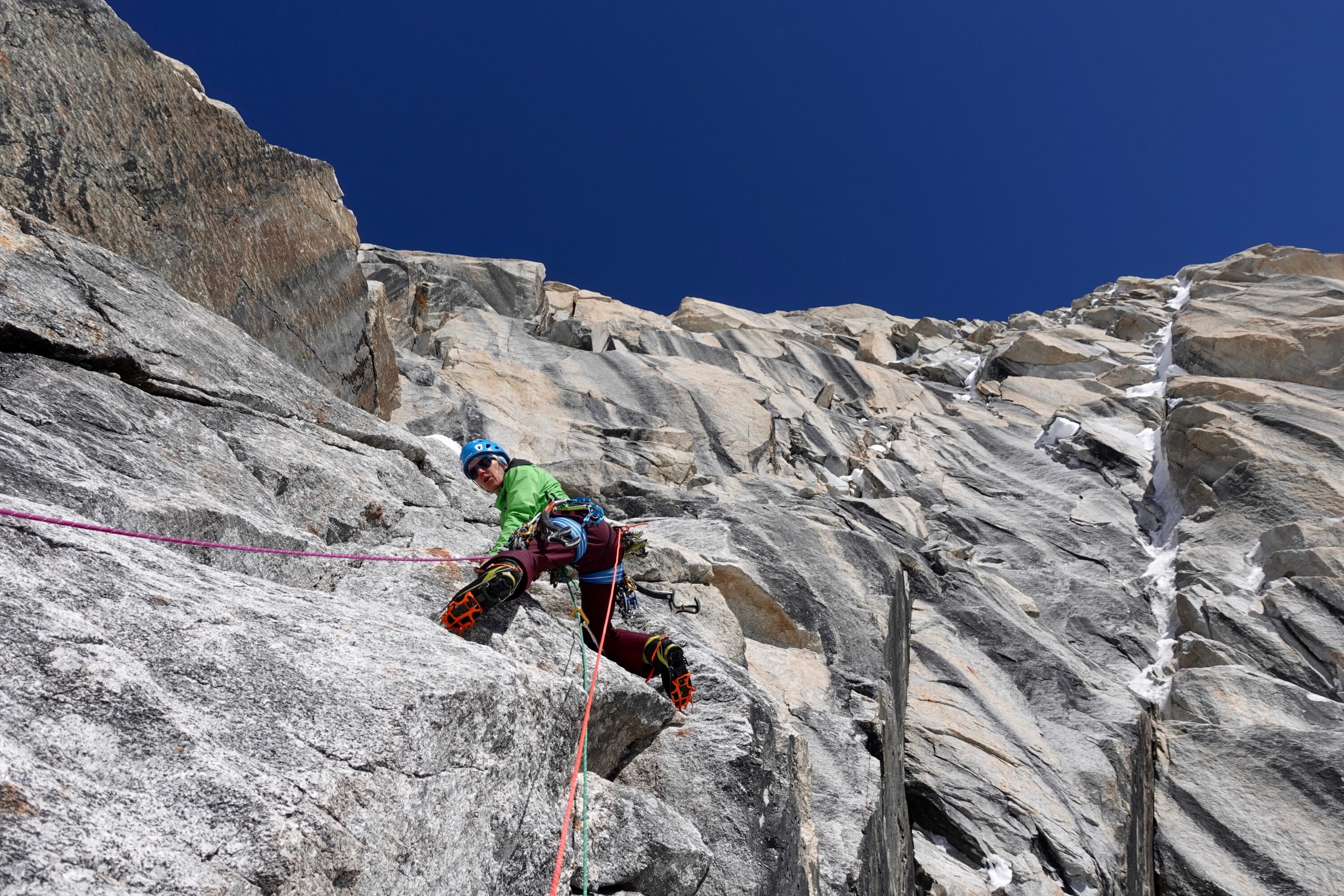
Mixed climbing involves both rock and ice, generally using axes and crampons. © Ines Papert
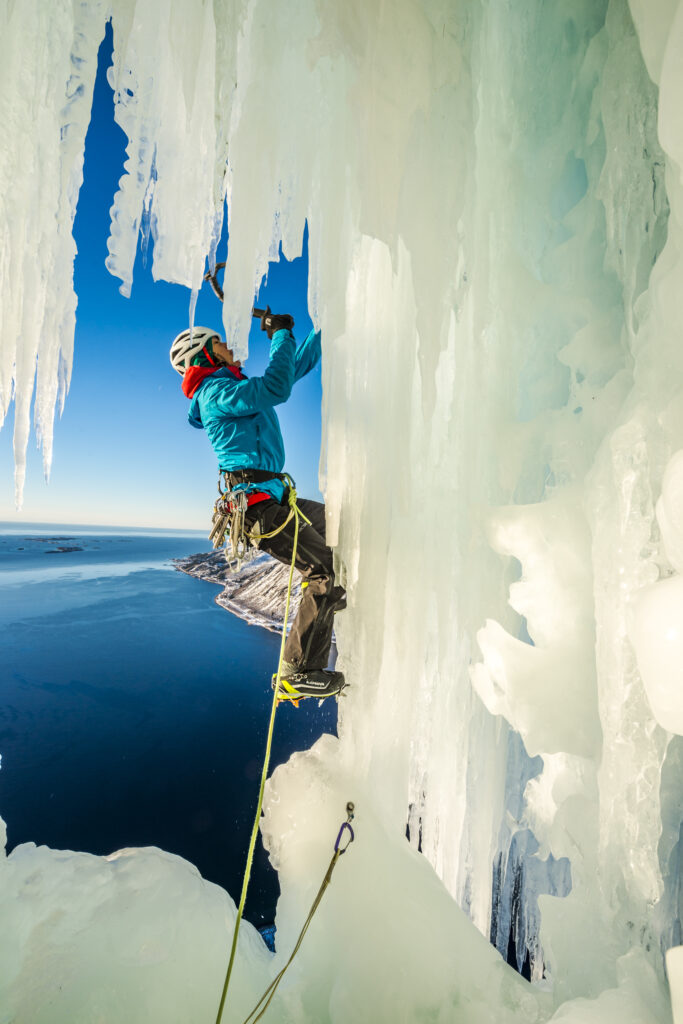
Natural ice is becoming scarcer and climbing days less frequent as the world grows warmer. © Ines Papert
Aside from technical climbing skills and physical strength, what are the sort of characteristics that an aspiring ice climber should focus on?
I think practising is the only way to become a better climber. There’s no other rule except doing it because it can be so different every time. So speaking about my first experience coming to Scotland for example, I brought 10 ice screws, which is what I usually bring on a big trip. All my Scottish friends were laughing at me they were like, What would you do with those? and I never used any. The second trip I brought four just in case, and again didn’t use any, but the third I didn’t bring any at all and all of a sudden all the big ice lines were formed and we had to ask around to borrow screws! So this story explains that every destination, every climb can be so different and you only learn by doing it.
Also, learning to read your line, trying to find the easiest way to get up. Listening and watching the hazards that are around – and there’s way more in ice climbing than rock climbing. I think seeing ice climbing as just as a sport is the wrong approach. It’s more than that. It’s many days and weeks and months and years of doing it for sure, but I wouldn’t say it’s impossible to learn. It seems way more difficult than it is in the beginning. The technical part is seems quite easy to some people, you have an axe with a big handle, you’re just swinging a tool. If you got the right technique and the right power, it’s not that difficult. But finding good gear is often what makes a difference. And it took me ages to learn about all the different gear we use, that’s quite a complex topic.
You have to be flexible, and you often walk away without doing anything. That’s something we all have to learn
Yes, there’s so much to learn about, and the list keeps on going on and on. Do you still feel as though you are learning even now?
Oh, yes, I do still learn every time I go out. I promise.
And the days I get to go climbing are getting less and less, which I guess has to do with global warming and the ice. We don’t often have the days to get out and climb ice any more, which I think for current generations makes it harder to get into it. You have to be flexible, and you often walk away without doing anything. That’s something we all have to learn now.
And of course making mistakes is a part of the learning process too. Has there ever been an occasion where you’ve made a mistake whilst climbing? And what did you learn from the mistake?
Oh, I think I made many mistakes in my career! Because I have always been learning by doing, I hardly had any mentors that showed me how to do things.
With ice I don’t really remember having any big failures, but on rock I did. That was my earlier life when I thought I had to take every single chance to claim a big mountain face, you know. I was so driven and super motivated and didn’t look into the weather during the rush. I ripped a huge flake off the mountain face and I fell and hurt myself really badly and my partner almost got killed. We were so lucky we didn’t die, and this story told me: Okay, often less is more. Choosing the objectives at the right moment, taking your time, preparing and finding the right window to do big objectives, that taught me a lot. So I got quieter I got more responsible towards myself and my partner after that.
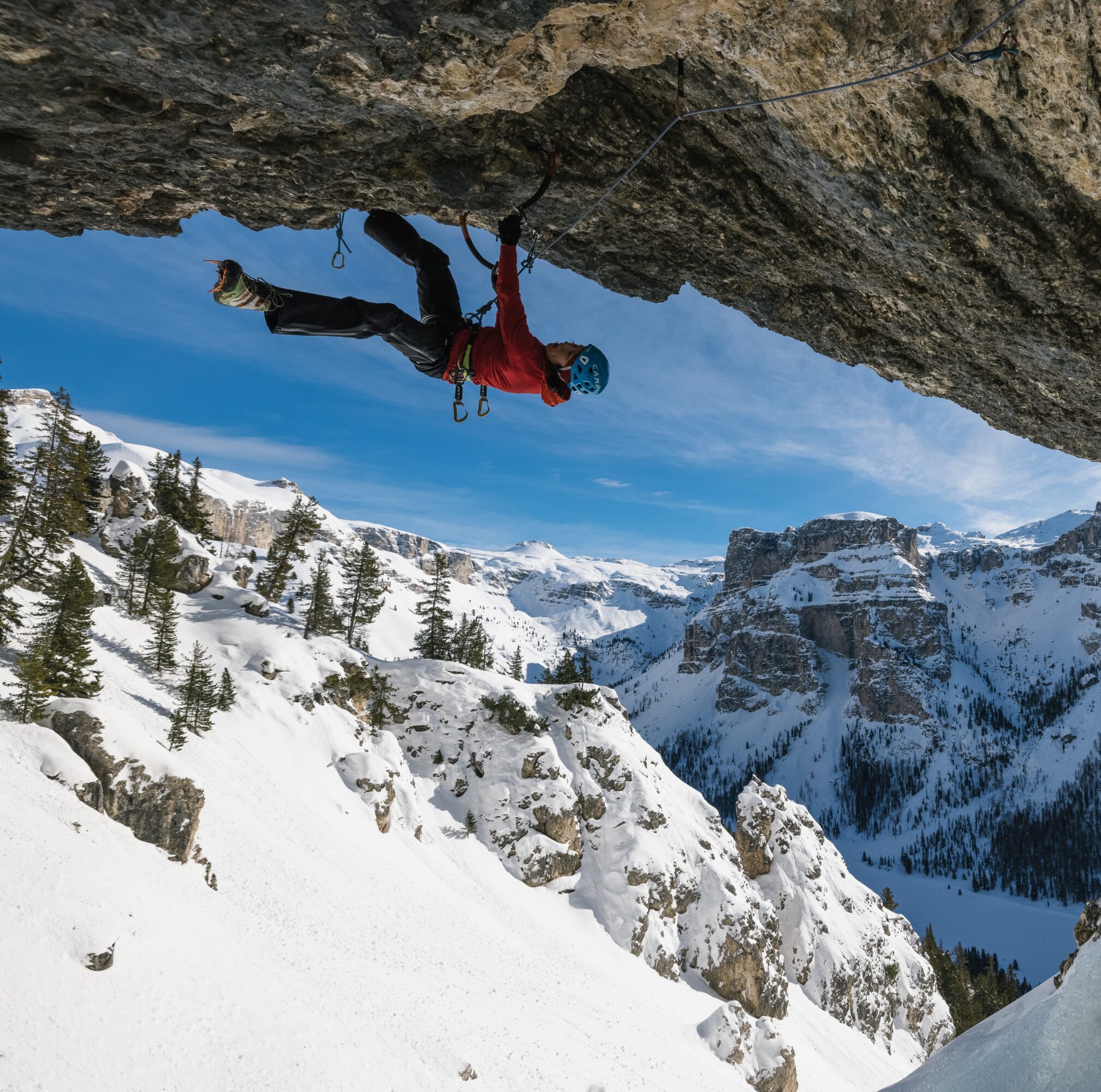
Ines and husband Luka climb the mixed route Godzilla M9+ WI5+ in South Tyrol, Italy © Ines Papert
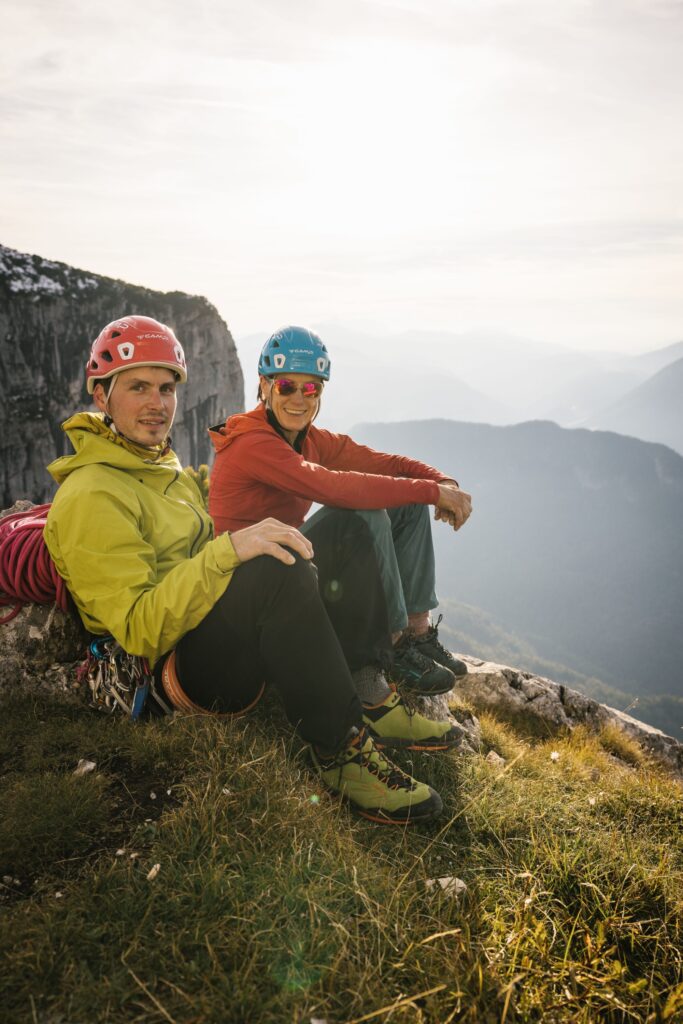
Ines and Luka at the top of their 380m route Wolke 7, in Bavaria © Klaus Fengler
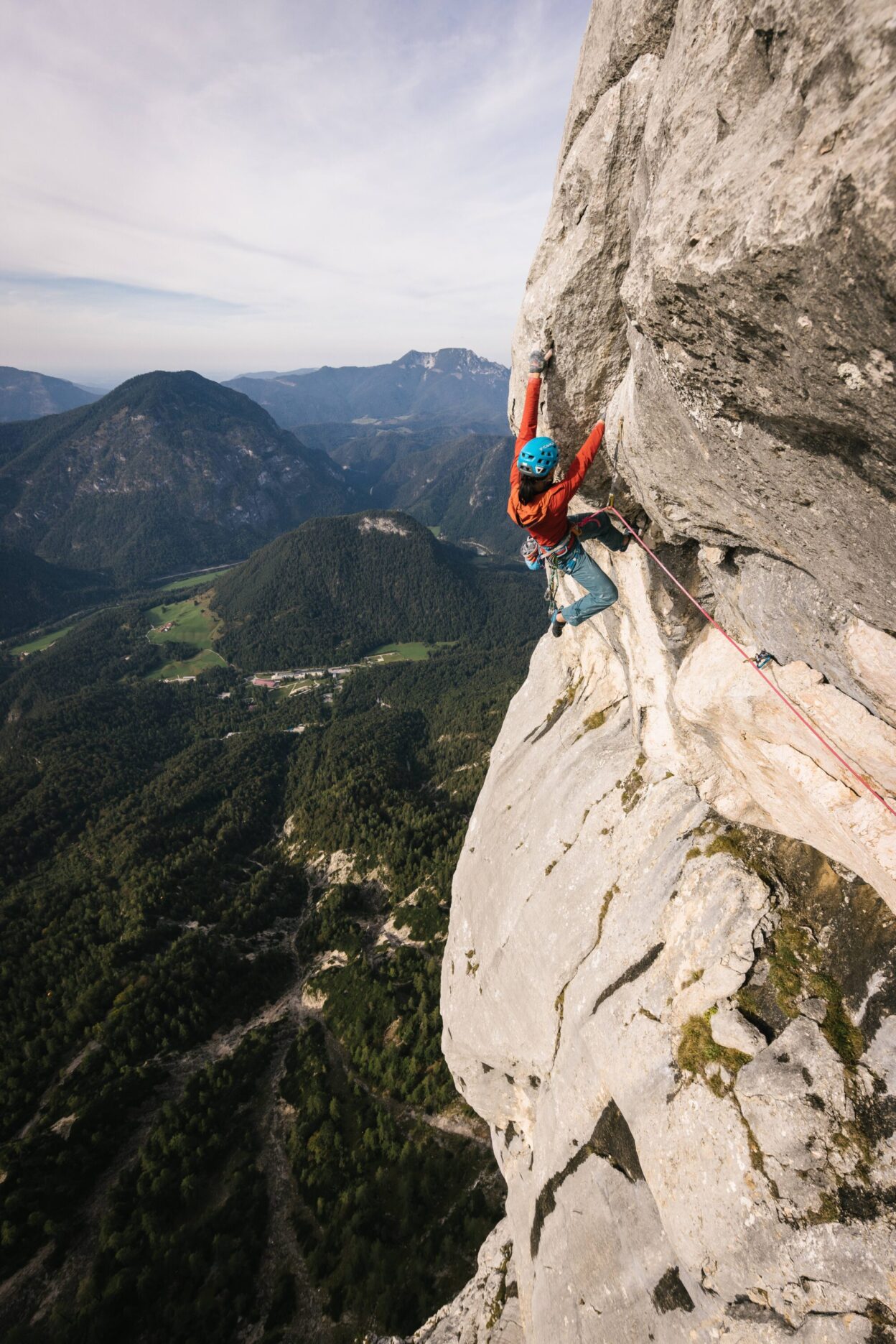
© Klaus Fengler
So you’re currently making a film at Helmcken Falls about a new route there, is telling the stories of your climbing experiences particularly important to you?
The route we chose wasn’t actually chosen to create a film about, but the idea of filming it came up later on in that period. I would never climb a route just for a film, I would make the same decisions whether we film or not. But yeah, it’s just to give other people the chance to be part of it, that’s the motivation I guess.
An element that is very inspiring for me, is that it’s an all-woman team that you are a part of too with this particular route. Does that have significance in the film?
Doing it with another female climber, that’s pretty rare. I don’t know many on the planet that would love to do adventures like that, but Sarah is a pretty sweet and strong woman. She sometimes struggles with fears and she always says: Oh, you’ve never you’re never scared. But I am, honestly. I do watch the mountain and I ask myself what is the obvious risk? And is this just my kind of girlish, Oh, I’m scared thing? I try to push her a little bit and she gives me a good feeling that what I’m doing is right. So we are pretty good team and have lots of fun.
Having children when you’re young and full of power, you’re able to share what you love the most with your kids
Do you think that kind of dynamic, like what you and Sarah have, is unique to all-women teams especially?
Yes, I see it often in females climbing. Climbing in the mountains is difficult, and also sketchy terrain. Often also I climb with my husband; we know each other really well, he has as much experience as I have, and we feel just comfortable. But women often get a bit lost in responsibility with a male partner. Sometimes when it comes to a hard pitch, the guy would go instead of me because I might not be that strong, which is stupid.
We just have to remember how strong we are and how strong we can be. And most of my female friends, they underestimate their skills. And I like pushing my female partners like: C’mon, you can do it. Because we are strong and we have the skills.
Following on quite nicely from that, a lot more women climbers that have recently become mothers are sharing their journeys, from climbing whilst pregnant and their continuing to climb after birth. What was it like for you as a mother who continued to climb?
I think I was in a pretty rare situation then, being a female climber in a sport that is was very much male dominated. And because my son appeared when I was 26 and I had just started my career, I never thought for a second, yeah, that’s now over. That was never an issue for me. For me it was simply a natural kind of development, to keep doing what I love doing the most, and to try to involve them into my life.
Having children when you’re young and full of power, you’re able to share what you love the most with your kids. And today, my son climbs as well. He loves climbing, he’s really strong. Luckily, he doesn’t do any alpine climbing, so I kind of feel good with that!
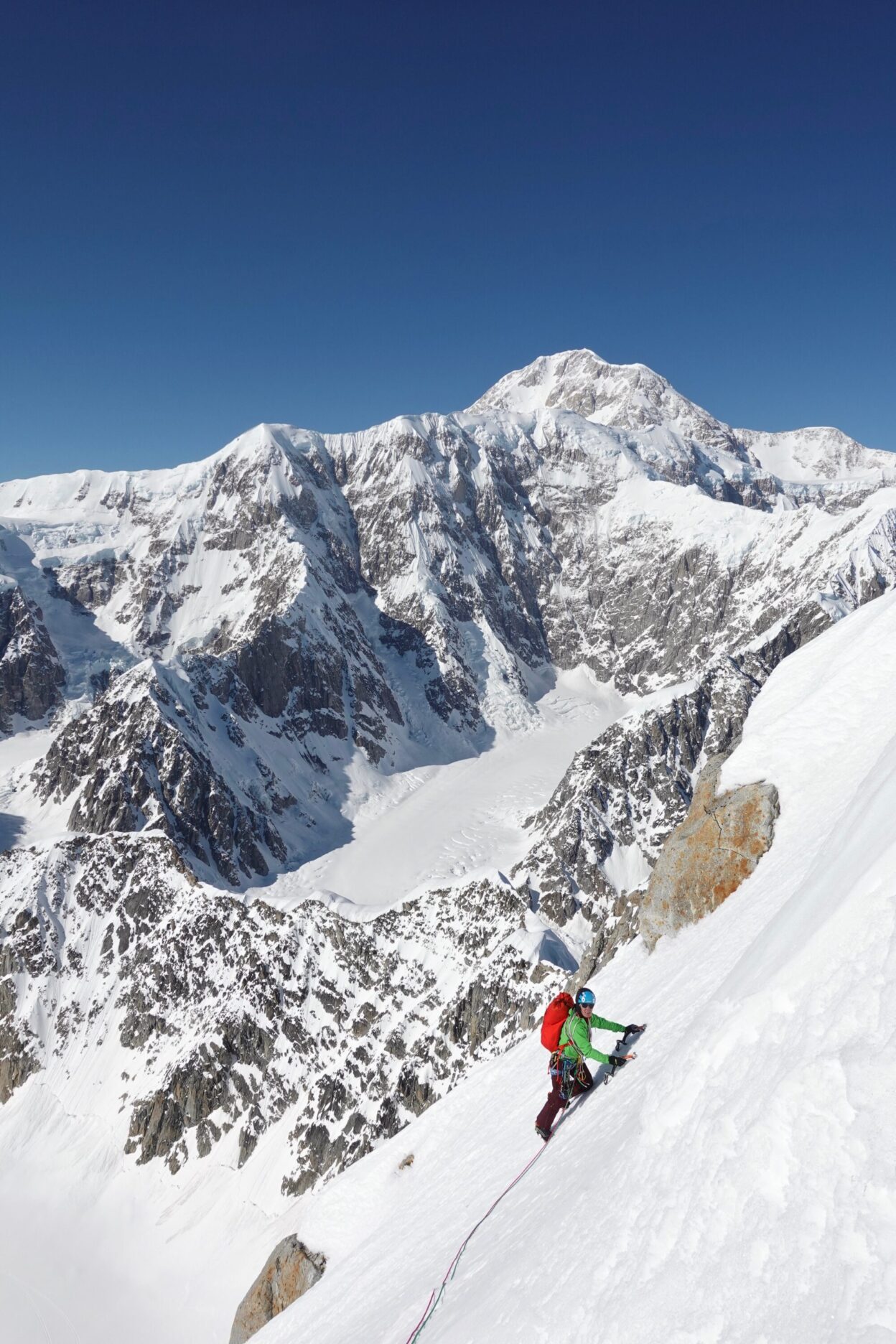
‘Often less is more’ – patience and preparation are key to climbing © Ines Papert
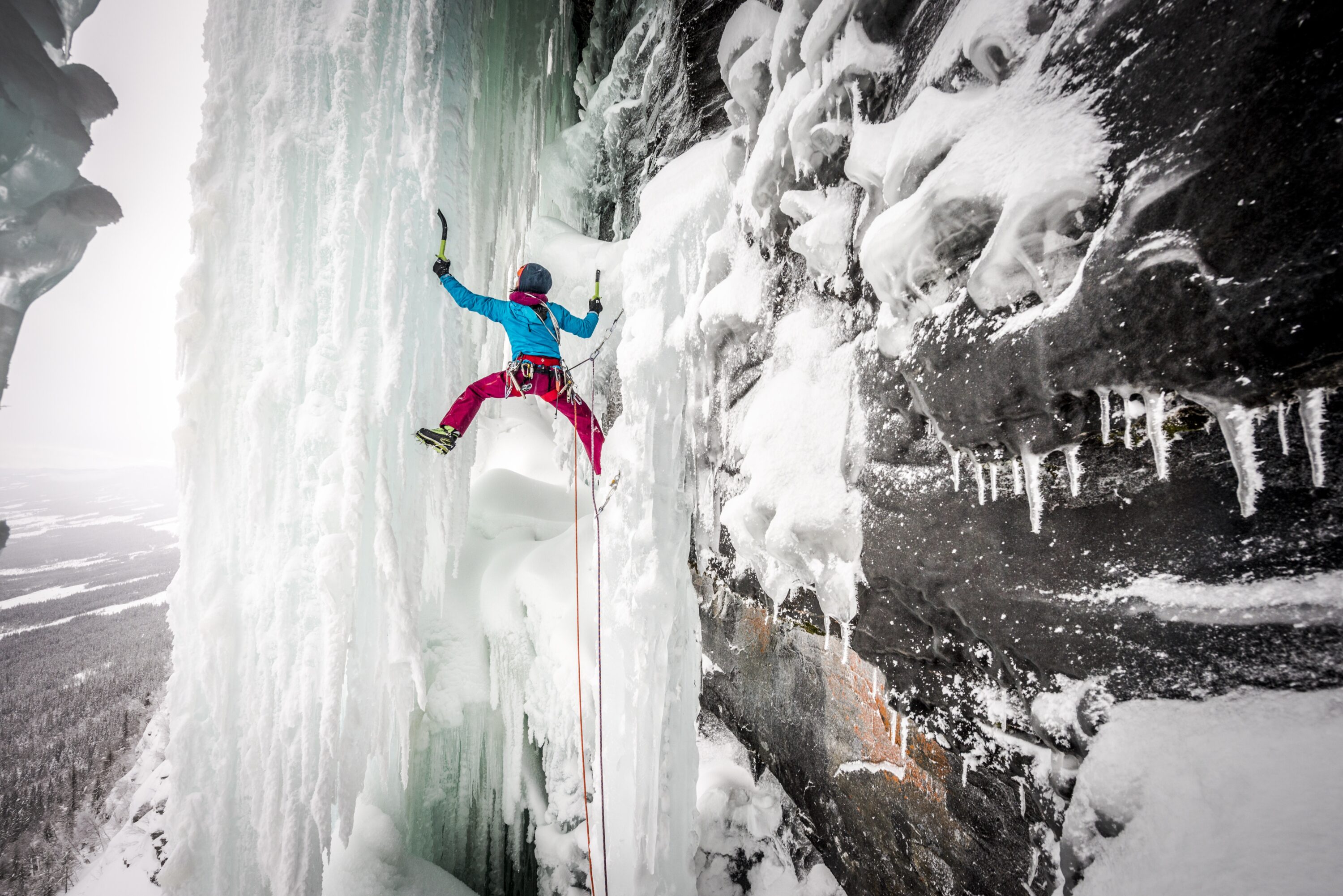
Do you think that the public attitude towards motherhood in activities that might be perceived as risky has changed to a more positive one, because of other athletes sharing that journey?
I never had bad experiences, but I’m also the kind of person that would never listen to what other people think anyway. Back then I didn’t have the chance to share it in the way female athletes are doing it today and I really love to see that, and the way it helps other women get rid of those fears. Seeing other athletes having babies and sharing their experiences with them and other women, yeah, it’s very positive.
Obviously, the overall opinion becomes more open when we talk about women having kids and climbing at the same time. People will always say they think it’s right or wrong because of course, we take a risk here and there. But we’re not stupid, we do think a lot about it. I think that when you’re a mom, you think even more about risk. Climbing was always part of my life, I couldn’t just run away and pretend I was happy without doing it.
For more inspiring insight from women who rock, check out this interview with Emma Twyford about ethical climbing and environmental stewardship, and Shauna Coxsey’s take on media perceptions of climbing whilst pregnant.
Don’t miss a single adventure
Sign up to our free newsletter and get a weekly BASE hit to your inbox
Other posts by this author
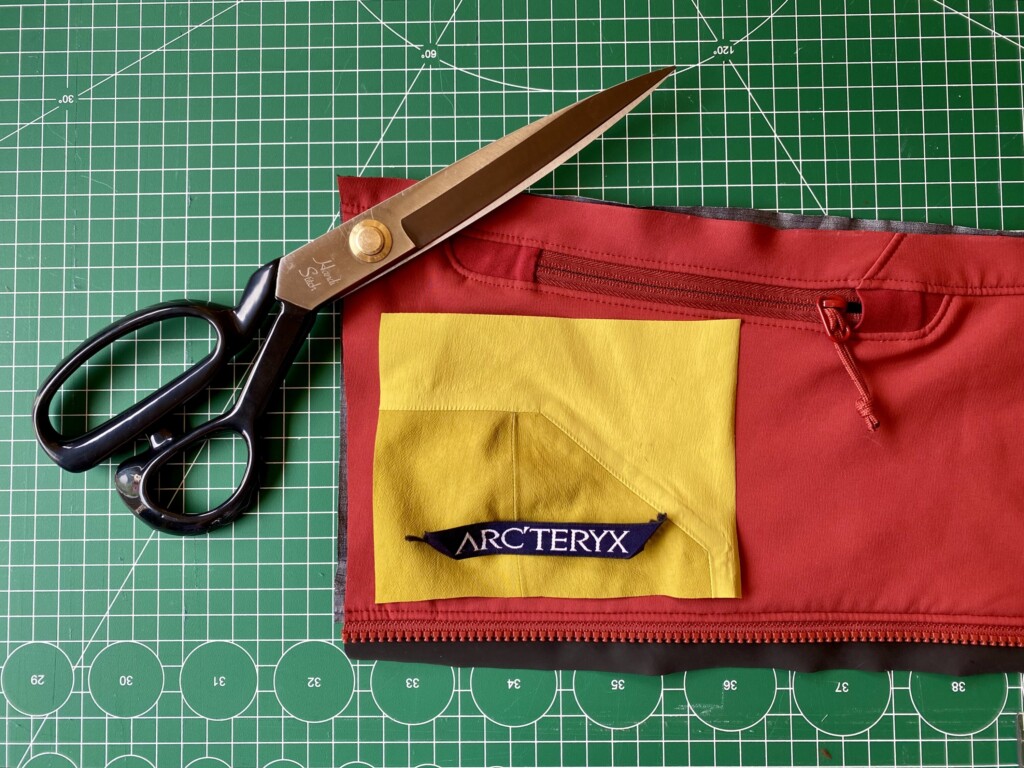
Story • Hannah Mitchell • Jul 28, 2023
Reframe, Engage, Create Change
How Arc'teryx's ReBIRD program is engaging consumers with the concept of circularity in the outdoor clothing industry
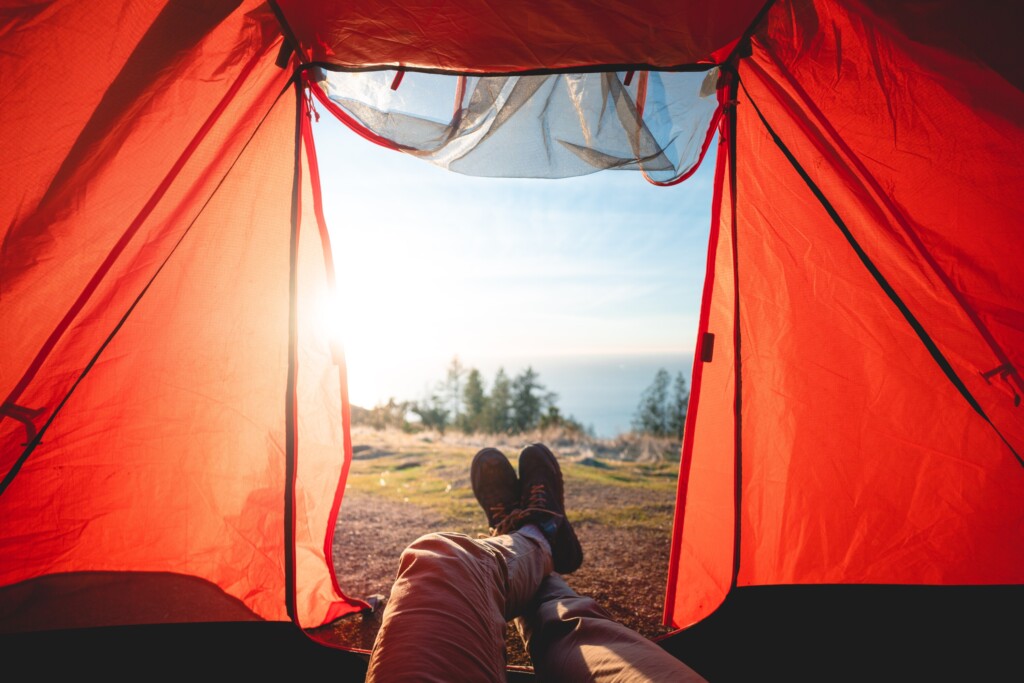
Story • Hannah Mitchell • Jun 27, 2023
The UK’s Best ‘Almost Wild Camping’ Spots For 2023
Back-to-basics camping and wild vibes... but with a few added comforts
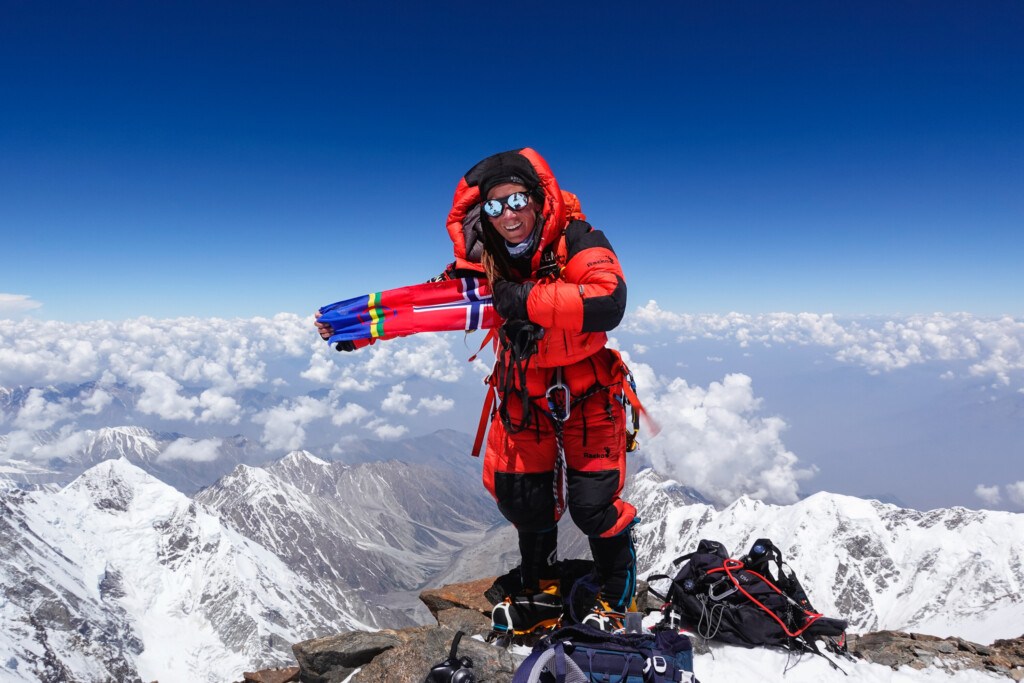
Interview • Hannah Mitchell • Jun 13, 2023
Chasing The 14: The Kristin Harila Interview
In conversation with record-breaking Norwegian mountaineer and Osprey ambassador, Kristin Harila

You might also like
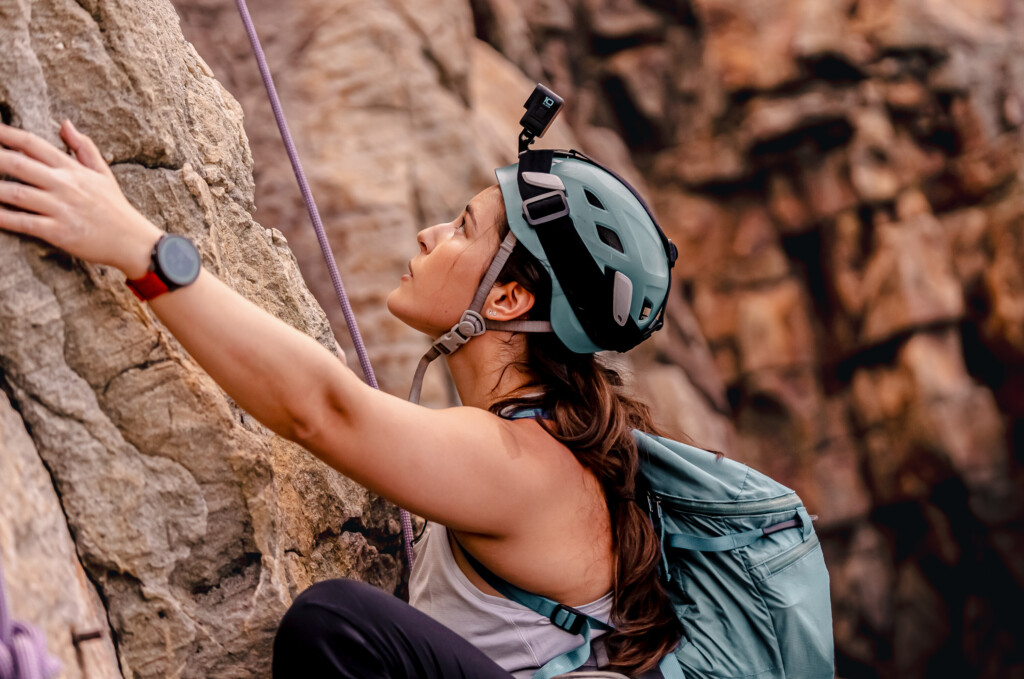
Photo Essay • BASE editorial team • Mar 18, 2024
Hunting happiness through adventure in Taiwan
BASE teams up with adventurer Sofia Jin to explore the best of Taiwan's underrated adventure scene.
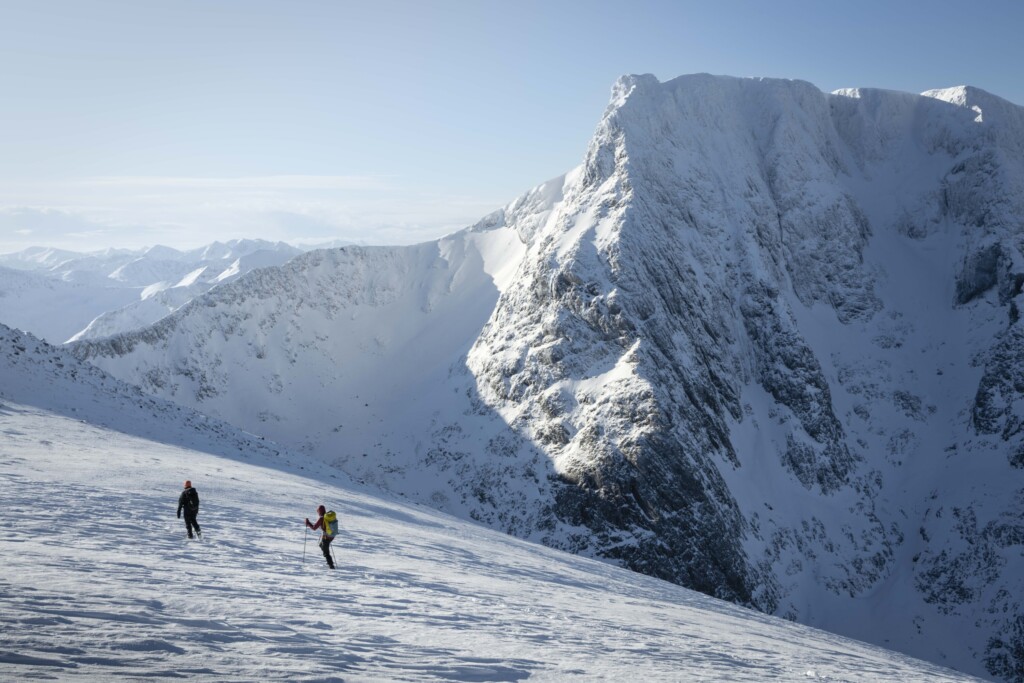
Story • BASE editorial team • Nov 21, 2023
Five Epic UK Climbs You Should Try This Winter
Craving a snowy mountain adventure? Inspired by the Garmin Instinct 2 watch (into which you can directly plan these routes), we've compiled a list of five of the best for winter 2023-24!

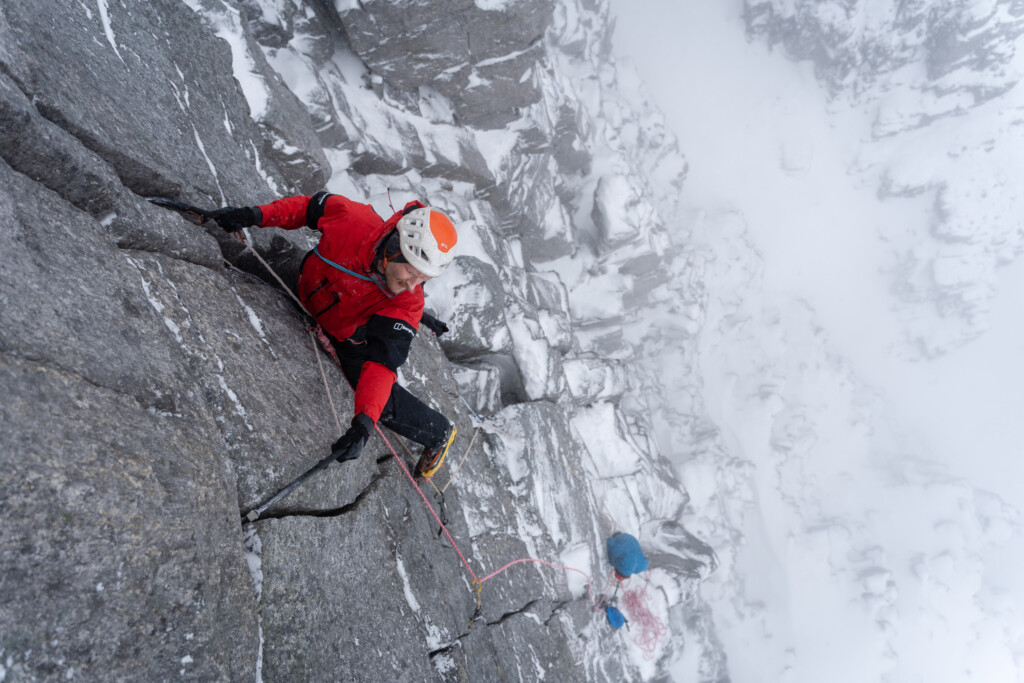
Video • BASE editorial team • Jul 21, 2023
Merging Two Lives: The Personal Journey of Hamish Frost
The challenges and triumphs of embracing sexuality in the outdoors
